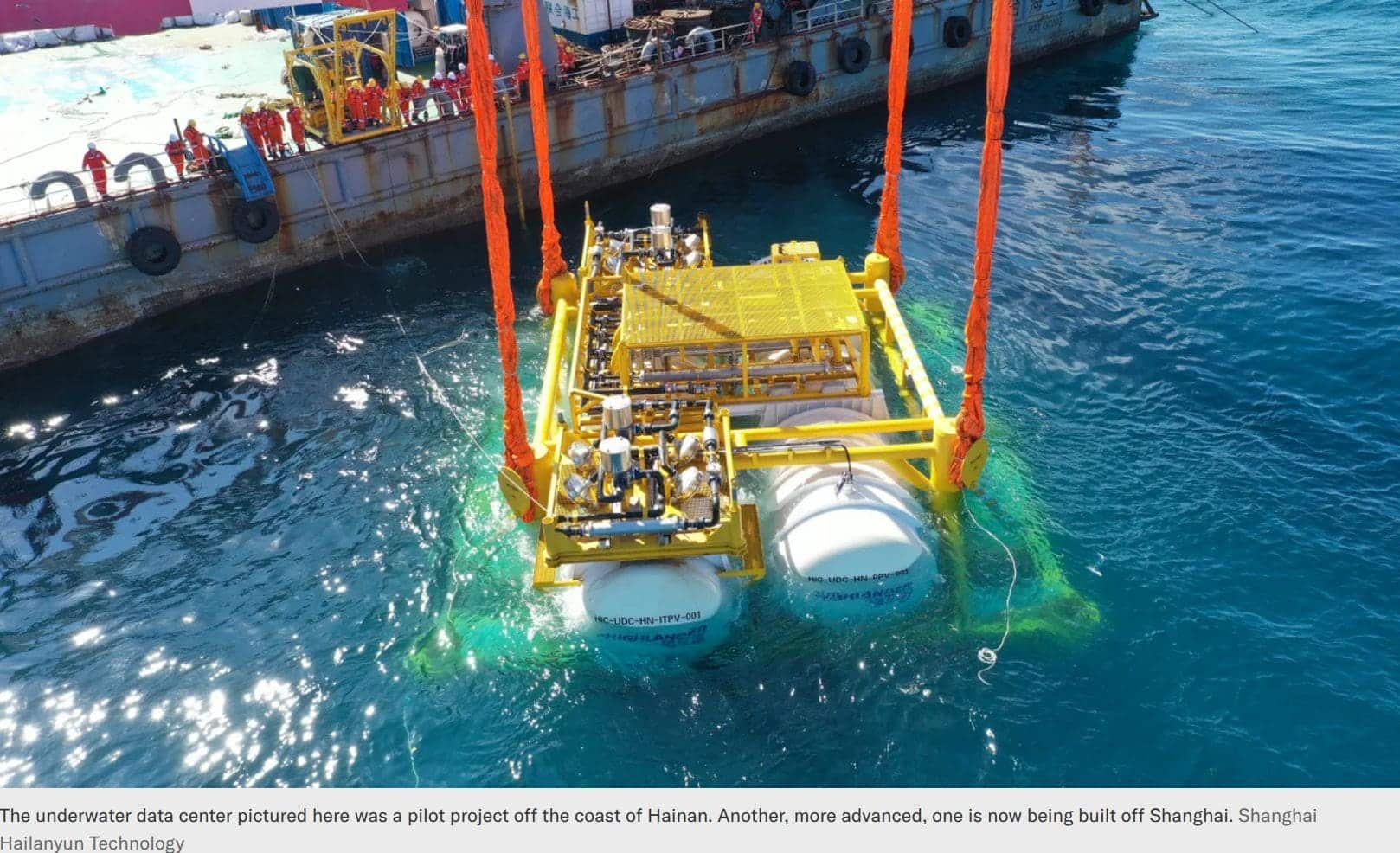The global race for artificial intelligence (AI) and cloud computing has driven the construction of data centers. These facilities, responsible for storing information and processing large-scale models, face a dilemma: they consume massive amounts of energy and water for cooling. In response to this challenge, China has decided to dive—literally—into an alternative solution: undersea data centers.
The company Shanghai Hailanyun Technology (HiCloud) is building an undersea data center six miles off the coast of Shanghai, powered by wind energy. Their goal is to reduce at least 30% of the energy used for cooling by leveraging seawater to dissipate heat from servers.
Shanghai’s Project: A Technological Leap with a Chinese Touch
The first phase of Hailanyun’s undersea data center is valued at $223 million and includes 198 racks, enough for between 396 and 792 AI servers. While modest compared to an average land-based data center in China—which typically has between 3,000 and 10,000 racks—the company claims it can run a training session equivalent to OpenAI’s GPT-3.5 model in a single day.
The system will be almost entirely powered by offshore wind energy (97% of its consumption), reinforcing its commitment to a low-carbon model.
This approach is inspired by Microsoft’s Natick Project (2015), when the company submerged a container with over 800 servers off the coast of Scotland. Microsoft found that sealed modules filled with nitrogen reduced hardware failures and improved energy efficiency. However, the company shelved the project, choosing only to use it as a testing ground.
Comparison with the U.S. Model: The xAI Colossus Case
While China is experimenting underwater, the U.S. approach is radically different. Elon Musk and xAI built the Colossus data center in Memphis, Tennessee, in record time and with surprisingly low costs, reusing existing industrial infrastructure.
Colossus employs a hybrid cooling system:
- Supermicro GPU servers cooled with wastewater filtered through the world’s largest ceramic bioreactor.
- The rest of the servers operate with traditional air cooling.
Musk’s strategy proved that building quickly and cheaply is still feasible without resorting to disruptive solutions like undersea deployments. Many industry players are now pushing traditional contractors to replicate this pragmatic model.
In this context, the big question remains: Does marine cooling truly offset the installation and maintenance costs compared to land reuse models like Colossus?
Technical Benefits and Limitations
Undersea data centers offer theoretical advantages:
- Natural cooling: significant reduction in energy expenditure compared to freshwater or evaporative systems.
- Controlled environment: nitrogen atmospheres reduce corrosion and increase reliability.
- Low surface impact: they free up land for other uses and integrate into marine energy ecosystems.
However, they also have limitations:
- Shorter lifespan: technological obsolescence of servers (3-5 years) reduces hardware longevity value.
- Logistical complexity: installation, maintenance, and repairs are much more costly than on land.
- Environmental and security risks: from localized water heating to potential acoustic attacks capable of damaging equipment, according to 2024 studies.
Environmental Impact: A Double-Edged Sword?
Hailanyun claims that their tests show an increase of less than 1°C in the surrounding water, an impact described as “practically insignificant”. However, researchers warn that in marine heatwave scenarios, the effect could intensify, reducing oxygen levels and risking biodiversity.
The debate echoes Microsoft’s experience, which documented minimal warming during its Natick project, albeit in colder, controlled ocean environments.
A Strategic Move for China
Beyond efficiency, the initiative reflects Beijing’s desire to lead in sustainable digital infrastructure and differentiate itself from the United States. With South Korea, Japan, and Singapore exploring similar options, oceanic data centers could become a new front in technological competition.
Zhang Ning, a researcher at the University of California, Davis, summarizes the landscape: “The issue isn’t so much the technical viability, which is already proven, but the ability to solve regulatory, ecological, and logistical challenges. And China is tackling these challenges on a large scale.”
Frequently Asked Questions (FAQ)
Why is China building undersea data centers?
To reduce water and energy consumption for cooling, harness marine renewable energy, and demonstrate leadership in sustainable digital infrastructure.
Are they cheaper than traditional data centers?
Not necessarily. While they save energy in cooling, installation and maintenance costs are much higher than reusing land-based infrastructures, as illustrated by the Colossus case in the U.S.
What is their environmental impact?
Studies show minimal local temperature rise, but under climate stress, they could adversely affect marine ecosystems.
Can they replace conventional data centers?
It’s unlikely. Instead, they will serve as a strategic complement in coastal regions, especially where sustainability and energy security are priorities.
via: scientificamerican

